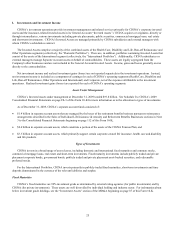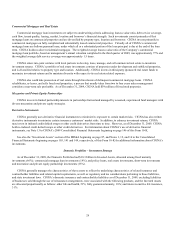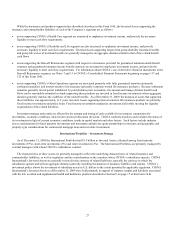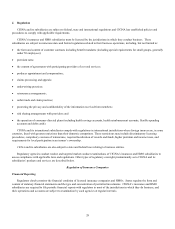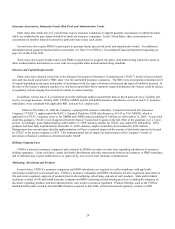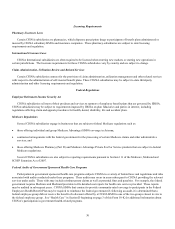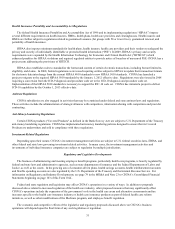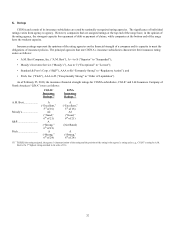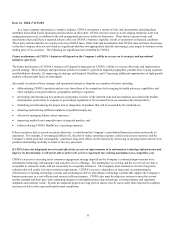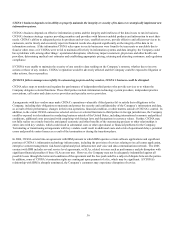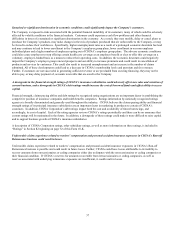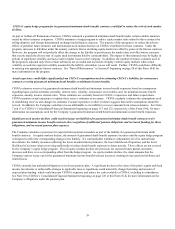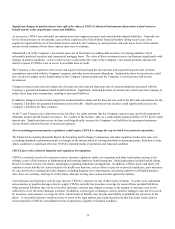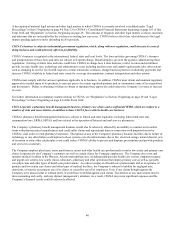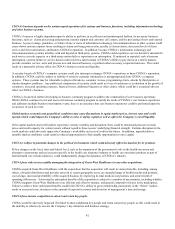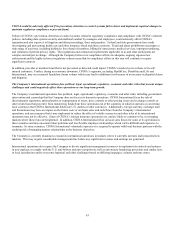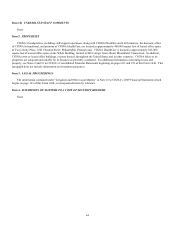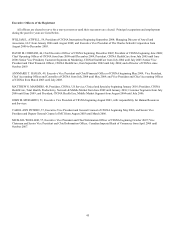Cigna 2009 Annual Report Download - page 55
Download and view the complete annual report
Please find page 55 of the 2009 Cigna annual report below. You can navigate through the pages in the report by either clicking on the pages listed below, or by using the keyword search tool below to find specific information within the annual report.35
Item 1A. RISK FACTORS
As a large company operating in a complex industry, CIGNA encounters a variety of risks and uncertainties including those
identified in this Risk Factor discussion and elsewhere in this report. CIGNA devotes resources to developing enterprise-wide risk
management processes, in addition to the risk management processes within its businesses. These factors represent risks and
uncertainties that could have a material adverse effect on CIGNA’s business, liquidity, results of operations or financial condition.
These risks and uncertainties are not the only ones CIGNA faces. Other risks and uncertainties that CIGNA does not know about now,
or that the Company does not now think are significant and does not appropriately identify and manage, may impair its business or the
trading price of its securities. The following are significant risks identified by CIGNA.
Future performance of CIGNA's business will depend on the Company’s ability to execute on its strategic and operational
initiatives effectively.
The future performance of CIGNA’s business will depend in large part on CIGNA’s ability to execute effectively and implement its
growth strategy. These strategic and operational initiatives include (1) growth in targeted geographies, product lines, buying segments
and distribution channels; (2) improving its strategic and financial flexibility; and (3) pursuing additional opportunities in high-growth
markets with particular focus on individuals.
Successful execution of these strategic and operational initiatives depends on a number of factors including:
x differentiating CIGNA's products and services from those of its competitors by leveraging its health advocacy capabilities and
other strengths in targeted markets, geographies and buyer segments;
x developing and introducing new products or programs, because of the inherent risks and uncertainties associated with product
development, particularly in response to government regulation or the increased focus on consumer directed products;
x identifying and introducing the proper mix or integration of products that will be accepted by the marketplace;
x attracting and retaining sufficient numbers of qualified employees;
x effectively managing balance sheet exposures;
x improving medical cost competitiveness in targeted markets; and
x further reducing CIGNA HealthCare’s operating expenses.
If these initiatives fail or are not executed effectively, it could harm the Company’s consolidated financial position and results of
operations. For example, if not managed effectively, the plan to reduce operating expenses could cut necessary resources and the
Company’s talent pool and, consequently, could have long-term effects on the business by decreasing or slowing improvements in its
products and limiting its ability to retain or hire key personnel.
If CIGNA does not adequately invest in and effectively execute on improvements in its information technology infrastructure and
improve its functionality, it will not be able to deliver the services required in the evolving marketplace at a competitive cost.
CIGNA's success in executing on its consumer engagement strategy depends on the Company’s continued improvements to its
information technology infrastructure and customer service offerings. The marketplace is evolving and the level of service that is
acceptable to customers today will not necessarily be acceptable tomorrow. The Company must continue to invest in long-term
solutions that will enable it to meet customer expectations. CIGNA's success is dependent, in large part, on maintaining the
effectiveness of existing technology systems and continuing to deliver and enhance technology systems that support the Company’s
business processes in a cost-efficient and resource-efficient manner. CIGNA also must develop new systems to meet the current
market standard and keep pace with continuing changes in information processing technology, evolving industry and regulatory
standards and customer needs. System development projects are long term in nature, may be more costly than expected to complete
and may not deliver the expected benefits upon completion.


